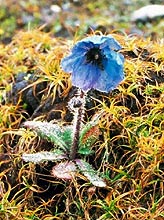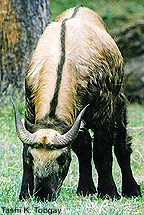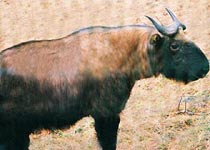|
Flora
and Fauna
|
 |
 |
Blue Poppy
Bhutan's
forest are divided into the Alpine Zone (4000m and above) where there is
no forest cover, the Temperate Zone falling between 2000 to 4000m with
conifer or broadleaf forests, and the Subtropical Zone with Tropical or
Subtropical vegetation from an elevation of 150m to 2000m. Forest types
include Fir Forests, Mixed Conifer Forest; Blue Pine Forest Chirpine Forest,
Broadleaf mixed with Conifer, Upland Hardwood Forest, Lowland Hardwood
Forest, and Tropical Lowland Forests.
More
than 60 percent of the endemic plant species of the Eastern Himalayas can
be found within Bhutan. |
Of
the 5,500 known species of vascular plants, 50 or more are endemic to Bhutan
itself. Although a comprehensive description of Bhutanese flora is yet
to be formulated, it is accepted that several species are highly valuable
for their conservation properties. These include some for alkaloids and
medicinal properties, some as wild gene pools for crop research, and those
that are potentials horticultural crops.
 |
Takin
| Three
ecological units may be distinguished within Bhutan: High - altitude, temperate,
and tropical. Snow leopard, blue sheep, red panda, tiger, takin,
marmot, and musk deer are some of the species found in the high altitudes.
Temperate zone fauna include tiger, leopard, goral, serow, gray langur,
macaques, Himalayan black bear, red panda, squirrels, sambar, wild pig,
and barking deer. |
 |
| The
tropical forests in the south have tiger, clouded leopard, elephant, greater
one-horned rhinoceros, water buffalo, golden langur; gaur, swamp deer,
hog deer, pygmy hog, hispid hare, piliated langur, sloth bear, and hornbills. |
|
The
first being continuous culture. As Bhutan was never conquered or colonized,
the country developed a culture relatively free from outside influence,
the institution of monarchy, and a deep sense of nationhood.
|






